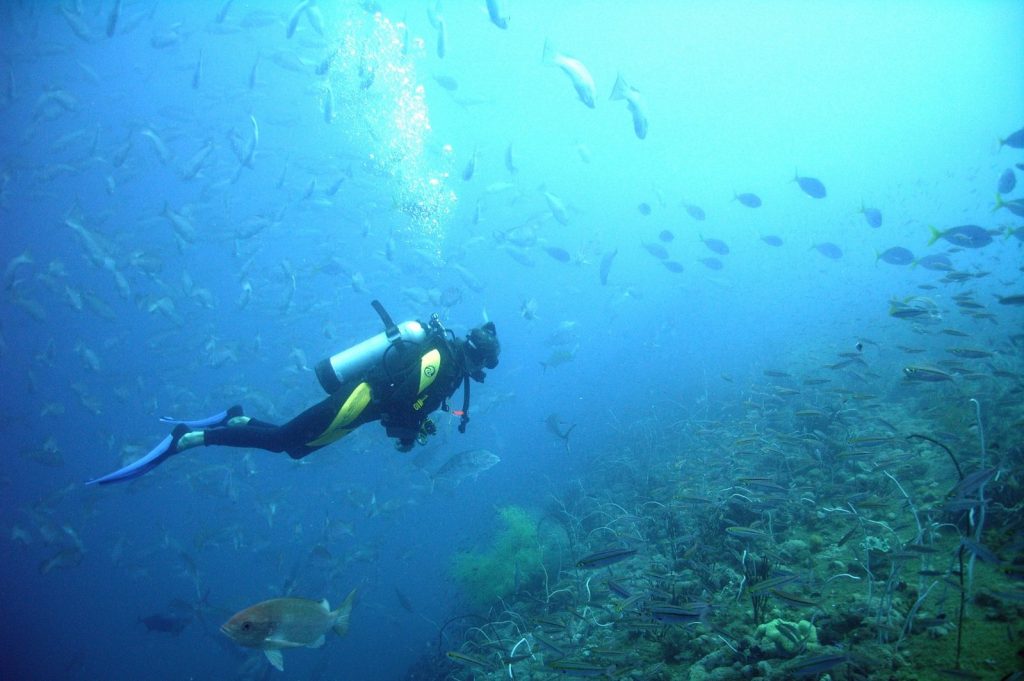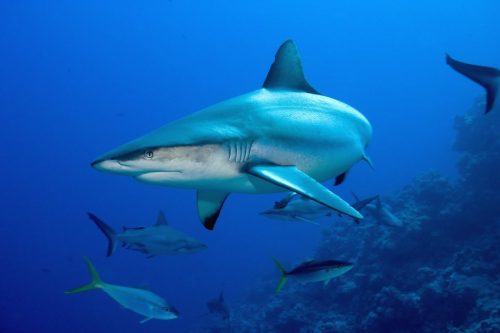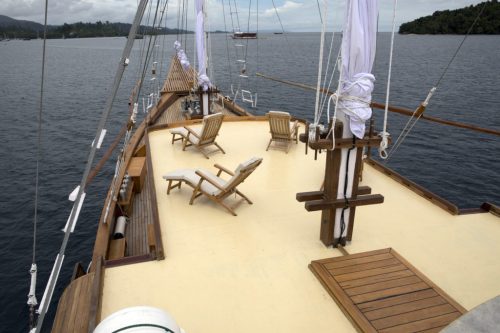Komodo National Park lies in the heart of the Indonesian Archipelago, noted for dragons, fast drift diving, and a plethora of marine life. This UNESCO World Heritage site includes Komodo Island, the Rinca and Padar Islands, as well as a number of smaller islands. If you’re considering Komodo island liveaboard trip, keep reading for our complete guide to scuba diving Komodo.

Best time to do scuba diving Komodo

You can dive in Komodo island all year. The liveaboard ‘season,’ on the other hand, runs from May to September, which is the dry season in the Nusa Tenggara region. Komodo liveaboard can be harmed by bad weather, notably heavy seas, during the rainy season. However, if you choose a resort-based alternative, you can still dive. Strong ocean currents are always present, ensuring good visibility.
Komodo diving – North
The water is usually warm and transparent in the north, with visibility averaging 82 feet (25 meters), however, it can exceed 130 feet (40 m). Water temperatures range from 81 to 82 degrees Fahrenheit (27 to 28 degrees Celsius), necessitating the use of a 3 mm complete wetsuit.

Because of the heavier currents, these places are best suited to experienced divers, though exceptions can be made during the quarter-moon phase. The currents create some fascinating dive designs and some fast drift dives, therefore strong buoyancy is essential in this area.
Strong currents attract huge stuff like white- and blacktip sharks, gray reef sharks, Napoleon wrasse, mantas, Mobula rays, and large schools of gigantic trevally, while the volcanic geology creates spectacular underwater panoramas.
These places may be inaccessible during the rainy season, between December and March, due to northwestern winds.
Scuba diving central Komodo
The diving in Komodo’s core section is the most diverse, with nearby dive sites frequently having radically different topography and marine life.
The average water temperature in this area is 27 to 28 degrees Celsius, therefore you’ll need at least a 3 mm full wetsuit. The average visibility is 50 feet (15 meters), but it can range from 7 to 30 m. Although diving is feasible all year, some dive spots are best between April and November.

Wall dives, pinnacle dives, drift dives, sheltered coral gardens, and excellent muck diving are all available. Turtles and reef sharks are almost always present, while manta rays are frequently seen at two popular scuba diving Komodo spots.
Diving – South
The water is slightly cooler in the south, averaging 23 to 24 degrees Celsius, thus a 5mm full-length suit is recommended. With upwellings ranging from 7 to 20 meters, visibility varies but averages approximately 12 m. The greatest time to dive in the south is from October to April when the water is cleaner and warmer.
You move into the colder upwelling water from the depths of the Indian Ocean from Pink Beach and further south. Ocean currents meeting with the continental shelf generate upwellings, which bring with them an unending supply of plankton and an explosion of marine life, including, of course, filter-feeding manta rays.
Soft corals, massive branching corals, and sea fans abound on the southern reefs. Nudibranchs, frogfish, pygmy seahorses, torpedo rays, and other invertebrates abound here, making it a macro-paradise.
Komodo liveaboard

A liveaboard is your best bet if you want to enjoy the entire diversity of scuba diving Komodo. There are nearly limitless options, ranging from inexpensive to luxury and everything in between.
Most boats provide land-based day tours to Rinca Island to observe the Komodo dragons on their off-gas day, as well as a surface interval visit to one of the area’s famous pink beaches, depending on the itinerary.